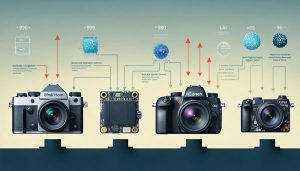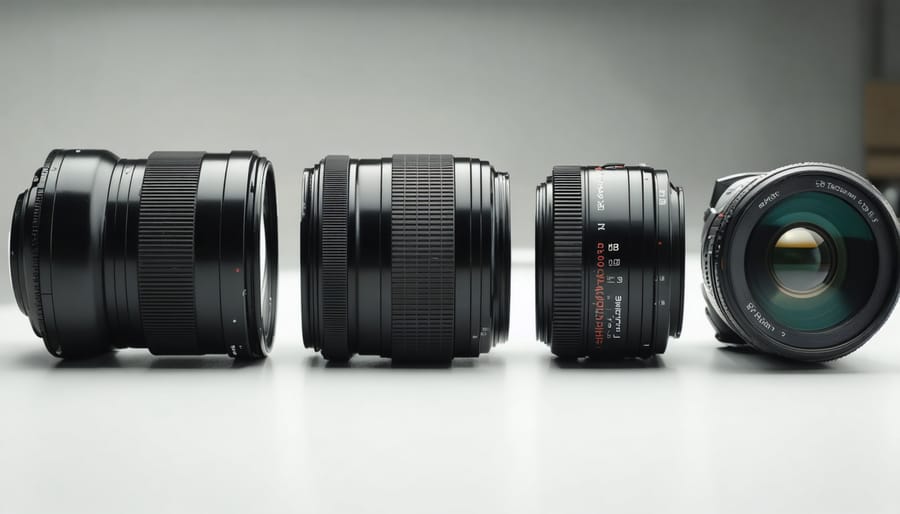
Advanced optics represents a quantum leap in modern photography, where revolutionary camera technologies merge with precision engineering to redefine image capture. From nano-scale lens coatings that virtually eliminate chromatic aberration to adaptive optical elements that compensate for atmospheric distortion in real-time, today’s advanced optical systems push the boundaries of what’s possible in photography and scientific imaging.
The convergence of computational photography with sophisticated glass elements has birthed hybrid systems capable of capturing detail beyond human perception. Multi-layer aspherical elements, engineered at the molecular level, now deliver edge-to-edge sharpness previously achievable only in theory. These innovations extend beyond traditional photography into quantum imaging, microscopy, and aerospace applications, where single-photon detection and adaptive optics enable breakthrough discoveries.
For photographers and imaging professionals, this technological renaissance means unprecedented creative control. Ultra-wide aperture lenses maintain tack-sharp focus across the entire frame, while specialized coatings eliminate flare and ghosting even in extreme lighting conditions. The integration of artificial intelligence with optical design has produced self-correcting systems that anticipate and compensate for environmental challenges, ensuring optimal image quality in any situation.
These advancements represent not just incremental improvements, but a fundamental transformation in how we capture and interpret light.
The Evolution of Lens Technology
From Simple Glass to Complex Elements
The journey of optical technology began with simple glass elements in the early days of photography. In the 1800s, photographers worked with basic single-element lenses that produced images with noticeable distortion and color fringing. These early lenses were essentially modified telescope designs, offering limited control over focus and exposure.
As understanding of optics evolved, manufacturers began experimenting with different glass types and combinations. The breakthrough came in the late 19th century when German glassmaker Otto Schott developed new glass formulations that allowed for better light transmission and reduced aberrations. This innovation led to the development of the famous Zeiss Tessar design in 1902, which became the blueprint for modern lens construction.
The mid-20th century saw the introduction of coating technologies that significantly reduced lens flare and improved contrast. Manufacturers began incorporating specialized elements like fluorite and extra-low dispersion glass, addressing common optical problems like chromatic aberration. Today’s lenses are marvels of engineering, often containing dozens of precisely arranged elements made from various materials, each serving a specific purpose in delivering exceptional image quality.
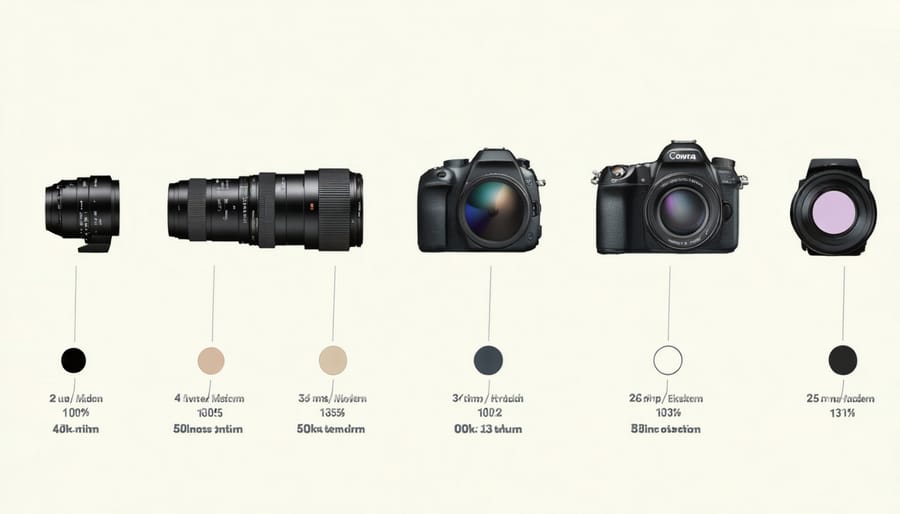
Modern Lens Coating Technologies
Modern lens coatings represent one of the most significant advances in optical technology, transforming how our lenses perform in challenging conditions. These microscopically thin layers, often just nanometers thick, work tirelessly to enhance image quality and protect your valuable modern lens accessories.
Anti-reflective coatings lead the pack, dramatically reducing internal reflections that cause ghosting and flare. Multi-coating technology applies multiple layers of these specialized materials, each targeting specific wavelengths of light. The result? Crisper contrast, better color accuracy, and improved light transmission – sometimes up to 99.9% of available light reaches your sensor.
But it doesn’t stop there. Fluorine coatings have revolutionized lens maintenance, creating a water and oil-repellent surface that keeps your front element cleaner for longer. Some manufacturers even employ nano-crystal coatings that virtually eliminate internal reflections, particularly useful when shooting into bright light sources.
These invisible innovations make the difference between a good shot and a great one, especially in challenging lighting conditions where every bit of optical performance counts.
Core Advanced Optical Technologies
Aspherical Elements
Aspherical elements represent one of the most significant advances in modern lens design, offering a elegant solution to common optical problems that have plagued photographers for decades. Unlike traditional spherical elements, which have a uniform curved surface, aspherical elements feature a more complex surface geometry that varies across their radius.
Think of a traditional spherical lens element as being like a section of a perfect sphere. While this design is easier to manufacture, it introduces several optical aberrations, particularly at the edges of the frame. These include spherical aberration, which causes light rays to focus at slightly different points, and distortion, which can make straight lines appear curved.
Aspherical elements correct these issues by precisely controlling how light rays travel through the lens. Their varying surface curvature helps ensure that all light rays converge at exactly the same point, resulting in sharper images with better corner-to-corner consistency. This is particularly noticeable in wide-angle lenses and when shooting at large apertures.
The benefits are substantial: improved edge sharpness, reduced distortion, and better control of chromatic aberration. Additionally, aspherical elements often allow lens designers to use fewer total elements, resulting in more compact and lighter lens designs without compromising optical quality.
While originally extremely expensive to manufacture, modern molding techniques have made aspherical elements more common in contemporary lenses, from premium professional glass to kit lenses.
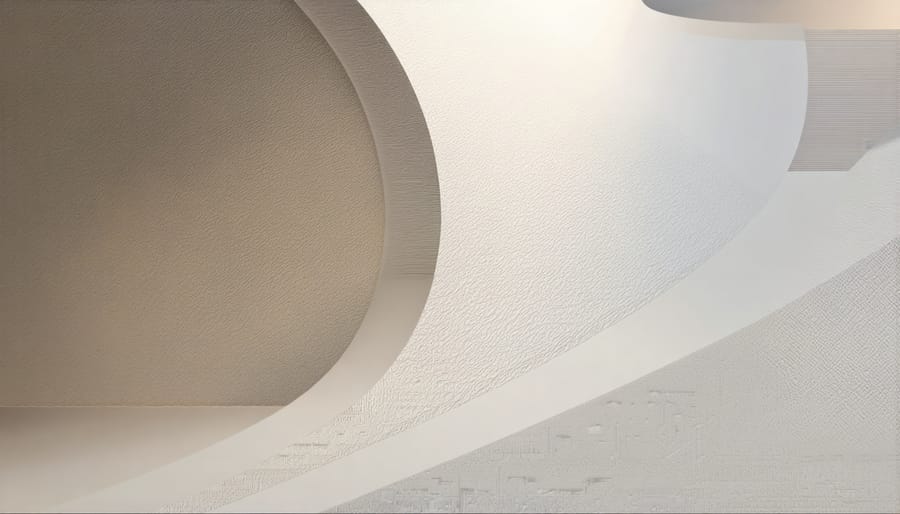
ED and Super ED Glass
When photographers discuss lens quality, ED (Extra-low Dispersion) and Super ED glass often come up as mark of premium optics. These specialized glass types represent a significant advancement in combating one of photography’s oldest challenges: chromatic aberration, those unwanted color fringing effects that can appear along high-contrast edges in your images.
ED glass contains rare earth elements like fluorite and is engineered to minimize how different wavelengths of light spread out when passing through the lens. Think of it like a prism effect – normal glass splits light into its component colors, but ED glass keeps these colors tightly grouped together. This results in sharper images with better color accuracy, particularly noticeable in telephoto lenses where chromatic aberration typically becomes more pronounced.
Super ED glass takes this technology even further, offering even better control over color dispersion. While ED elements might reduce purple fringing by 80%, Super ED can nearly eliminate it. This improvement comes at a cost, though – Super ED elements are more expensive to manufacture and contribute to higher lens prices.
You’ll commonly find ED elements in professional-grade zoom lenses and telephoto primes, while Super ED elements are typically reserved for flagship lenses where absolute image quality is paramount. For nature and wildlife photographers who frequently shoot in high-contrast situations, these glass types can make a meaningful difference in image quality.
Fluorite Elements
Fluorite elements represent a significant breakthrough in modern lens design, offering exceptional optical properties that make them invaluable for high-performance camera lenses. Unlike traditional glass elements, fluorite crystals naturally possess very low dispersion characteristics, meaning they can dramatically reduce chromatic aberration – those unwanted color fringing effects that can appear around high-contrast edges in your images.
What makes fluorite truly special is its ability to transmit light with remarkable clarity while simultaneously correcting color aberrations that would typically require multiple standard glass elements to address. This results in lenses that are not only sharper but also potentially lighter and more compact than their conventional counterparts.
Canon was among the first manufacturers to master the artificial growing of fluorite crystals for camera lenses, incorporating them into their prestigious L-series telephoto lenses. Today, fluorite elements are found in many premium lenses, particularly those designed for sports, wildlife, and professional photography where image quality is paramount.
The benefits of fluorite extend beyond just technical performance. Photographers working in challenging lighting conditions particularly appreciate how fluorite elements help maintain contrast and color accuracy, even when shooting backlit subjects or in situations prone to flare. While these elements do contribute to higher production costs, their impact on image quality makes them a worthwhile investment for photographers seeking the ultimate in optical performance.
Advanced Focusing Systems
Linear and Ring-type Motors
Focus motors are the unsung heroes of modern camera systems, playing a crucial role in how quickly and accurately your lens can achieve sharp focus. Two primary types dominate the market today: linear and ring-type motors, each offering distinct advantages for different shooting scenarios.
Linear motors, as the name suggests, move in a straight line and are particularly popular in smaller, lighter lenses. They excel in speed and precision, making them ideal for capturing fast-moving subjects. Think of sports photography or wildlife shots where split-second focusing can mean the difference between a keeper and a missed opportunity. These motors are also notably quiet, which is particularly valuable when shooting video or working in noise-sensitive environments.
Ring-type motors, on the other hand, are built in a circular configuration around the lens barrel. They’re typically found in larger, professional-grade lenses where torque and reliability are paramount. Their design allows for excellent durability and consistent performance, even when moving heavier lens elements. Wildlife photographers often prefer lenses with ring-type motors for their ability to handle repeated focus adjustments without degradation in performance.
Both motor types have benefited from recent technological advances. Modern linear motors can now achieve near-silent operation while maintaining exceptional speed, while ring-type motors have become more compact without sacrificing power. Some manufacturers have even developed hybrid systems that combine the advantages of both designs, offering photographers the best of both worlds: speed, precision, and reliability in a single package.
The choice between these motor types often comes down to your specific shooting needs and the type of photography you primarily pursue.
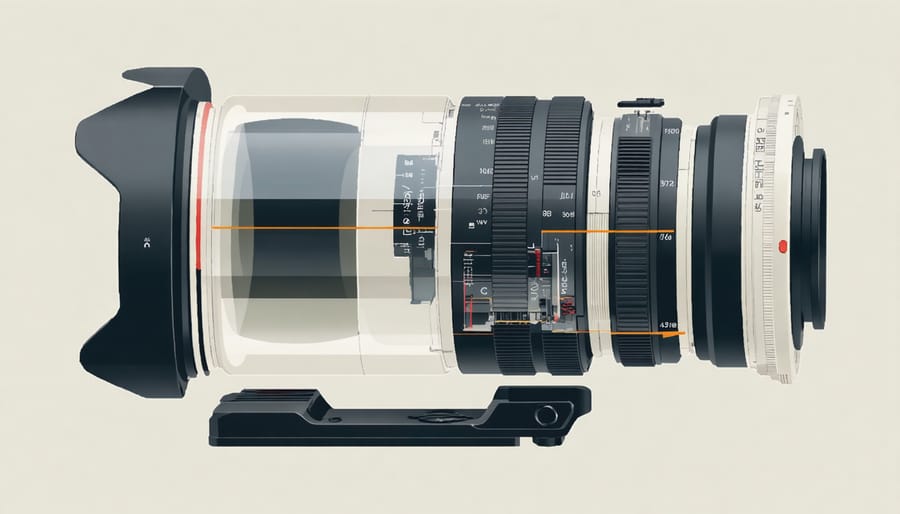
Focus Breathing Compensation
Focus breathing is a phenomenon that many photographers encounter but may not immediately recognize. When focusing from near to far subjects (or vice versa), traditional lenses often exhibit a noticeable change in focal length, resulting in an unwanted shift in image framing. This effect can be particularly problematic during video recording or when capturing focus-stacked images.
Modern lens manufacturers have developed sophisticated Focus Breathing Compensation (FBC) systems to address this challenge. These systems employ a combination of precisely engineered lens elements and advanced electronics to maintain consistent framing throughout the entire focus range. Think of it as an intelligent correction mechanism that automatically adjusts the lens elements to counteract the natural tendency of focal length variation during focusing.
For instance, when shooting wedding ceremonies or documentary footage, FBC technology allows videographers to maintain their intended composition while pulling focus between subjects. A cinematographer can smoothly transition focus from a couple exchanging rings to their emotional parents in the background without any distracting changes in frame size.
The implementation of FBC varies among manufacturers. Some achieve this through purely optical designs, utilizing floating elements that move in precise coordination. Others incorporate electronic corrections through the camera’s processor, especially in mirrorless systems. High-end cinema lenses often feature the most sophisticated FBC systems, as consistent framing is crucial in professional video production.
While this technology adds to the complexity and cost of lens design, the benefits for both still and motion photography make it an increasingly standard feature in premium lenses, particularly those designed for hybrid photo/video use.
Image Stabilization Technologies
Optical vs. Hybrid Stabilization
When it comes to keeping our shots steady, photographers and videographers have two main allies: optical and hybrid stabilization. Optical stabilization (OS) works through floating lens elements that physically move to counteract camera shake, while hybrid systems combine optical and digital methods for enhanced stability.
Think of optical stabilization as a sophisticated shock absorber in your lens. When your hands shake, gyroscopic sensors detect the movement, and specialized lens elements shift in the opposite direction to maintain image alignment. This traditional approach excels in still photography, particularly in low-light conditions where slower shutter speeds are necessary.
Modern hybrid image stabilization systems take things further by combining optical elements with digital corrections. These systems use sensor-shift technology and software algorithms to provide up to 8 stops of stabilization – something that was unthinkable just a few years ago.
Each approach has its sweet spot. Optical stabilization works silently and doesn’t crop your image, making it ideal for wildlife and sports photography. Hybrid systems, while slightly more power-hungry, offer superior performance for video work and extreme shooting conditions. Many modern cameras now offer both options, letting you choose the best tool for your specific shooting scenario.
The choice ultimately depends on your primary use case. For purely photographic work, optical stabilization often suffices. However, if you frequently switch between photo and video, the versatility of hybrid systems might be worth the investment.

Advanced Gyro Sensors
Modern gyroscopic sensors have revolutionized image stabilization in advanced camera systems, offering photographers unprecedented control over motion and shake reduction. These tiny but sophisticated devices work by detecting minute movements across multiple axes, responding in real-time to both intentional camera movements and unwanted vibrations.
Today’s advanced gyro sensors can detect movement as subtle as 0.01 degrees, operating at sampling rates of up to 8000 times per second. This incredible sensitivity allows stabilization systems to compensate for everything from hand tremors to walking motion, and even the vibrations caused by a camera’s own mechanical operations.
The latest generation of sensors incorporates AI-driven algorithms that can distinguish between intentional camera movements and unwanted shake. For instance, when panning to follow a moving subject, the system recognizes the deliberate horizontal motion while still compensating for vertical shake. This intelligent discrimination ensures smooth footage without fighting against the photographer’s intended movements.
Multi-axis stabilization, powered by these advanced sensors, has become particularly crucial for long-exposure photography and videography. Where traditional stabilization systems might offer 3-4 stops of compensation, modern sensor arrays can provide up to 8 stops of stabilization – meaning you can shoot handheld at shutter speeds up to 8 times slower than normally possible while maintaining sharp results.
For action photographers and videographers, these improvements translate into significantly more usable shots and smoother footage, even in challenging conditions.
The Future of Optical Technology
The landscape of optical technology is evolving at a breathtaking pace, promising exciting developments that will reshape how we capture and experience photography. As we look at the future of camera technology, several groundbreaking innovations are leading the way.
Liquid lens technology is perhaps the most revolutionary advancement on the horizon. Unlike traditional glass elements, these lenses use electromagnetic forces to manipulate fluid elements, allowing for instant focusing and unprecedented versatility. Imagine a single lens that could replace your entire collection, adjusting its focal length and aperture with microscopic precision.
Computational optics is another frontier pushing boundaries. By combining advanced algorithms with traditional glass elements, manufacturers are developing lenses that can correct aberrations in real-time and even capture data beyond what the human eye can see. This technology could make ultra-sharp images possible even in challenging lighting conditions.
Meta-surface lenses represent another quantum leap forward. These ultra-thin optical elements use nanoscale structures to manipulate light in ways traditional lenses cannot. While currently in development, they promise to dramatically reduce the size and weight of camera systems while improving image quality.
The integration of artificial intelligence into lens design is also transforming how optics perform. Smart lenses can now predict focusing patterns, adapt to shooting conditions, and even learn from your shooting style to optimize performance. This marriage of traditional optics and machine learning suggests a future where lenses become active participants in the creative process rather than passive tools.
As these technologies mature, we’re moving toward a future where the boundaries between optical and digital imaging continue to blur, opening new possibilities for both professional photographers and enthusiasts alike.
Advanced optics has revolutionized modern photography in ways that early pioneers of the craft could never have imagined. From the remarkable clarity of today’s nano-coated lenses to the precision of hybrid autofocus systems, these technological breakthroughs have expanded the creative possibilities for photographers at every level.
The impact is particularly evident in challenging shooting conditions that were once considered nearly impossible to capture. Low-light photography has been transformed by wide-aperture lenses with superior light transmission and minimal distortion. Wildlife and sports photographers now benefit from incredible telephoto optics that maintain sharpness even with extreme focal lengths.
Perhaps most significantly, advanced optical technologies have democratized professional-quality imaging. Features that were once exclusive to high-end equipment have become increasingly accessible, allowing enthusiast photographers to achieve results that rival those of seasoned professionals. The incorporation of aspherical elements, fluorite glass, and sophisticated lens coatings has raised the baseline for image quality across all price points.
Looking ahead, the continued evolution of optical technology promises even more exciting developments. From computational optics that push the boundaries of traditional lens design to adaptive elements that respond to shooting conditions in real-time, we’re entering an era where the marriage of advanced optics and digital technology will continue to redefine what’s possible in photography.
As we embrace these innovations, one thing remains clear: the pursuit of optical excellence continues to drive the future of photography, enabling creators to capture and share their vision with unprecedented clarity and precision.



